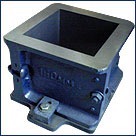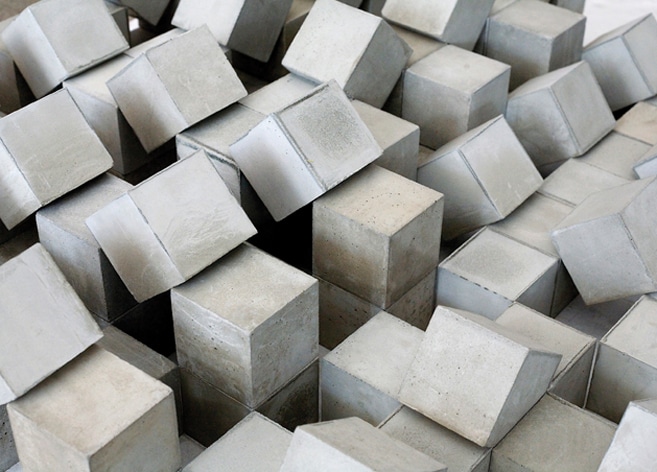Procedure: Compressive Strength Test of Concrete Cubes
For cube test two types of specimens either cubes of 15cm X 15cm X 15cm or 10cm X 10cm x 10cm depending upon the size of aggregate are used. For most of the works cubical moulds of size 15cm x 15cm x 15cm are commonly used.


This concrete is poured in the mould and tempered properly so as not to have any voids. After 24 hours these moulds are removed and test specimens are put in water for curing. The top surface of these specimen should be made even and smooth. This is done by putting cement paste and spreading smoothly on whole area of specimen.
These specimens are tested by compression testing machine after 7 days curing or 28 days curing. Load should be applied gradually at the rate of 140 kg/cm2 per minute till the Specimens fails. Load at the failure divided by area of specimen gives the compressive strength of concrete.

Following are the procedure for testing Compressive strength of Concrete Cubes
Apparatus for Concrete Cube Test
Preparation of Concrete Cube Specimen
The proportion and material for making these test specimens are from the same concrete used in the field.
Specimen
6 cubes of 15 cm size Mix. M15 or above
Mixing of Concrete for Cube Test
Mix the concrete either by hand or in a laboratory batch mixer
Hand Mixing
- Mix the cement and fine aggregate on a water tight none-absorbent platform until the mixture is thoroughly blended and is of uniform color
- Add the coarse aggregate and mix with cement and fine aggregate until the coarse aggregate is uniformly distributed throughout the batch
- Add water and mix it until the concrete appears to be homogeneous and of the desired consistency
Sampling of Cubes for Test
- Clean the mounds and apply oil
- Fill the concrete in the molds in layers approximately 5 cm thick
- Compact each layer with not less than 35 strokes per layer using a tamping rod (steel bar 16mm diameter and 60cm long, bullet pointed at lower end)
- Level the top surface and smoothen it with a trowel



